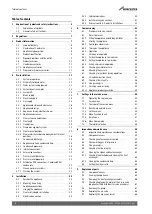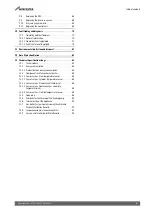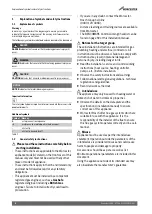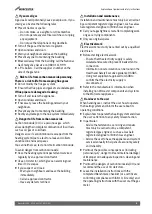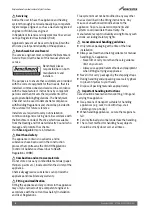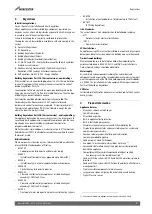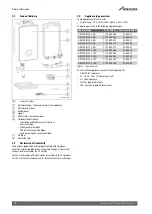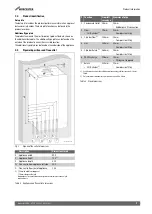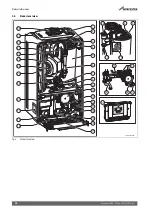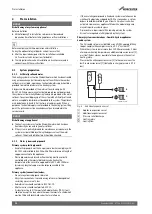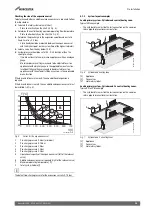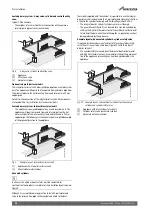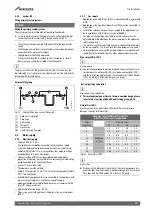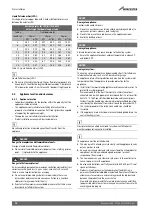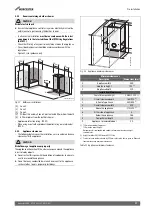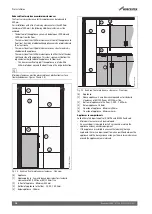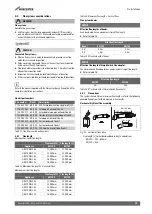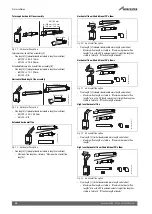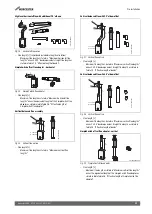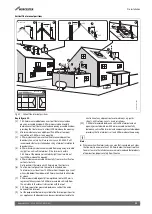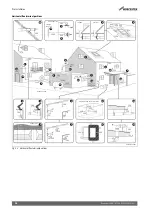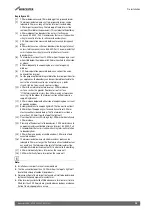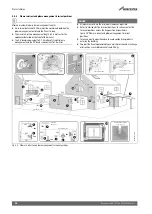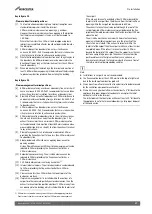
Pre-Installation
Greenstar 4000 – 6 720 891 162 (2020/09)
12
4
Pre-Installation
NOTICE
Risk of damage to system or appliance!
Before installation
▶ All the following Pre-Installation sections must be read and
requirements met before starting appliance or flue installations.
Before continuing with the preparation and installation
If using the optional integral diverter valve kit ensure that:
▶ All of the required equipment for the installation is available
(
Diverter valve kit instructions for details).
▶ The integral diverter valve kit installation instructions are read in
conjunction with these instructions.
4.1
System preparation
4.1.1
Artificially softened water
The heating system must not be filled with water which has been treated
using an ion exchange (salt based) water softener. Where these water
softeners are installed, a permanent untreated water supply should be
provided to maintain pressure in the heating system.
A bypass must be provided at the water softener to comply with
BS:14743. Where a permanent untreated supply cannot be provided,
the system must be initially filled using the bypass provided at the water
softener. Occasional topping up of the system with artificially softened
water is acceptable. Inhibitor must be added to the system. The pH levels
must be between 6.5 and 8.0 at the time of commissioning. When a
permanent untreated supply is not provided to the heating system filling
point, the pH levels must be checked annually and recorded in the
service record.
NOTICE
Risk of damage to appliance!
▶ The heating system must not be filled with water which has been
treated using an ion exchange water softener.
▶ If the system is partially drained for maintenance or repair work, the
system must be refilled by utilising the bypass valve at the water
softener. The pH and inhibitor levels should be checked.
4.1.2
Water systems and pipework
Primary system plastic pipework:
• Any plastic pipework must have a polymeric barrier, complying with
BS 7921 and installed to BS 5955 with 600mm (minimum) length of
copper connected to the appliance.
• Plastic pipework used for under-floor heating must be correctly
controlled with a thermostatic blending valve limiting the
temperature of the circuits to approximately 50°C with 1000mm
(minimum) length of copper or steel pipe connected to the
appliance.
Primary system/connections/valves:
• Do not use galvanised pipes or radiators.
• All system connections, taps and mixing valves must be capable of
sustaining a pressure of 3 bar.
• Radiator valves should conform to BS 2767:10.
• All other valves should conform to BS 1010.
• It is best practice to fit Thermostatic Radiator Valves (TRV's) to all
radiators, except the area where the room thermostat is sited which
must be fitted with lockshield valves that are left open.
• If the circulating pump speed is fixed and system circulation can be
significantly adjusted or stopped by TRV's or zone valves, a system
bypass should be installed to give at least a 3 metre circuit when
activated. However; any appliance fitted with a modulating pump
may not require a system bypass.
• Drain cocks are required at all the lowest points on the system.
• Air vents are required at all high points on the system.
Primary system considerations - Combi & System appliances
Sealed system
• The CH sealed system must be filled using a WRAS approved filling
loop or comply with examples in section 4.1.4 "System fill".
• Where the system volume is more than 100 litres or exceeds 2.5 bar
at maximum heating temperature an additional expansion vessel [2]
must be fitted as close as possible to the appliance in the central
heating return.
• Pressurise the extra expansion vessel [2] to the same value as the
built-in expansion vessel [1] (default pre-charge pressure is 0.75
bar).
Fig. 4
Additional expansion vessel
[1]
Appliance expansion vessel
[2]
Additional expansion vessel
[3]
Pressure relief discharge
[4]
Heating return
[5]
Heating flow
0010021117-001
3
4
5
2
1


